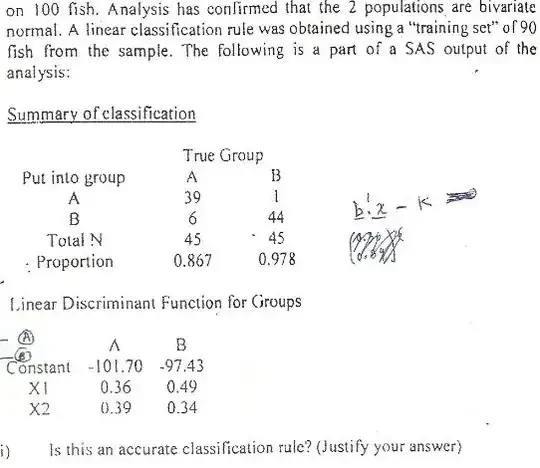The last table shows Fisher's discrimination & classification coefficients. Here is how they are computed (see the bottom section). When groups are only 2, LDA is called "Fisher's LDA", and extracting discriminant function and then classifying by it can be done in one stage: there is no actual need to extract the discriminant function bodily and then classify by it, - the equivalent pass is to compute Fisher's coefficients, which allow to classify data directly by the original variables.
So no, the table is not two discriminant functions. For 2 groups, only one disriminant function exist. That function is actually not shown anywhere in your output: it is implied.
To assign an observation with the help of the Fisher's coefficients, compute classA = .36*X1+.39*X2-101.70 and classB = .49*X1+.34*X2-97.43. Compute classA-classB. If the value is positive, assign to A; if negative, assign to B.
Nowadays, Fisher's coefficients are rarely used, mostly for didactic reasons, for they conceal the computation of the discriminant function(s) as a latent variable(s). LDA is theoretically two-stage analysis: extract discriminants, then classify by them via Bayes' approach.

